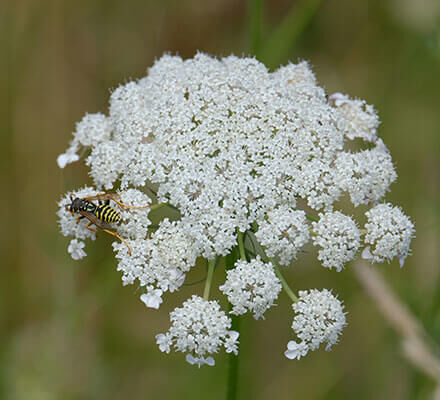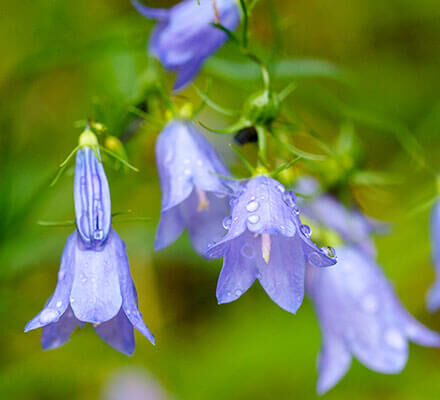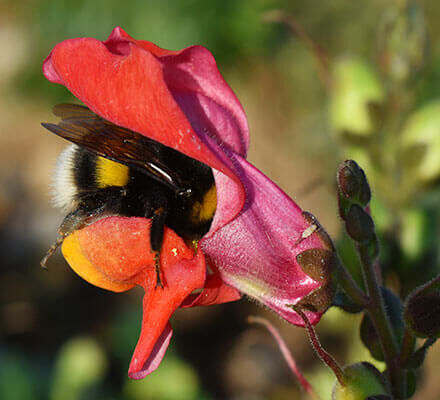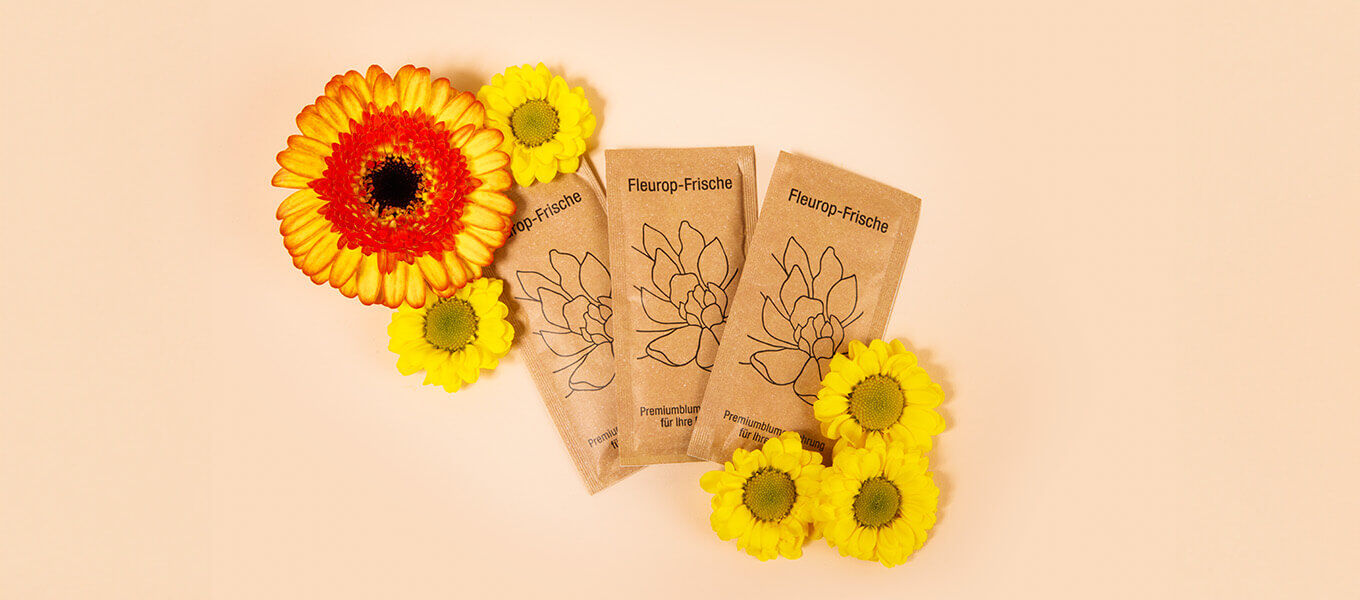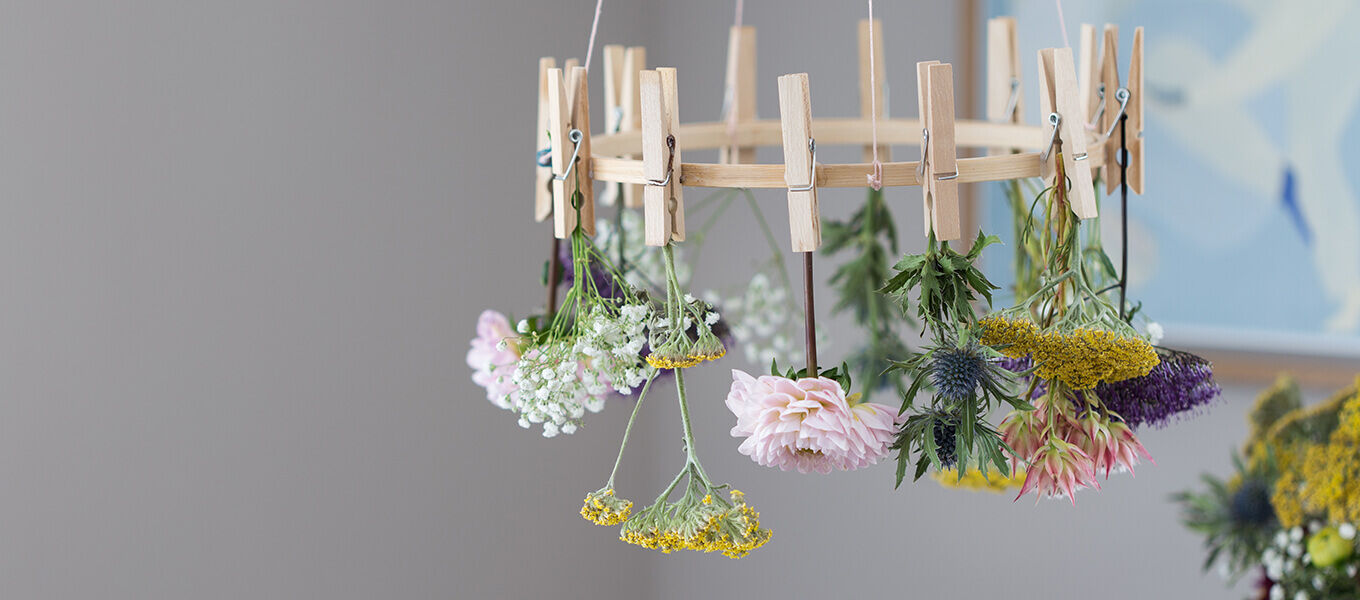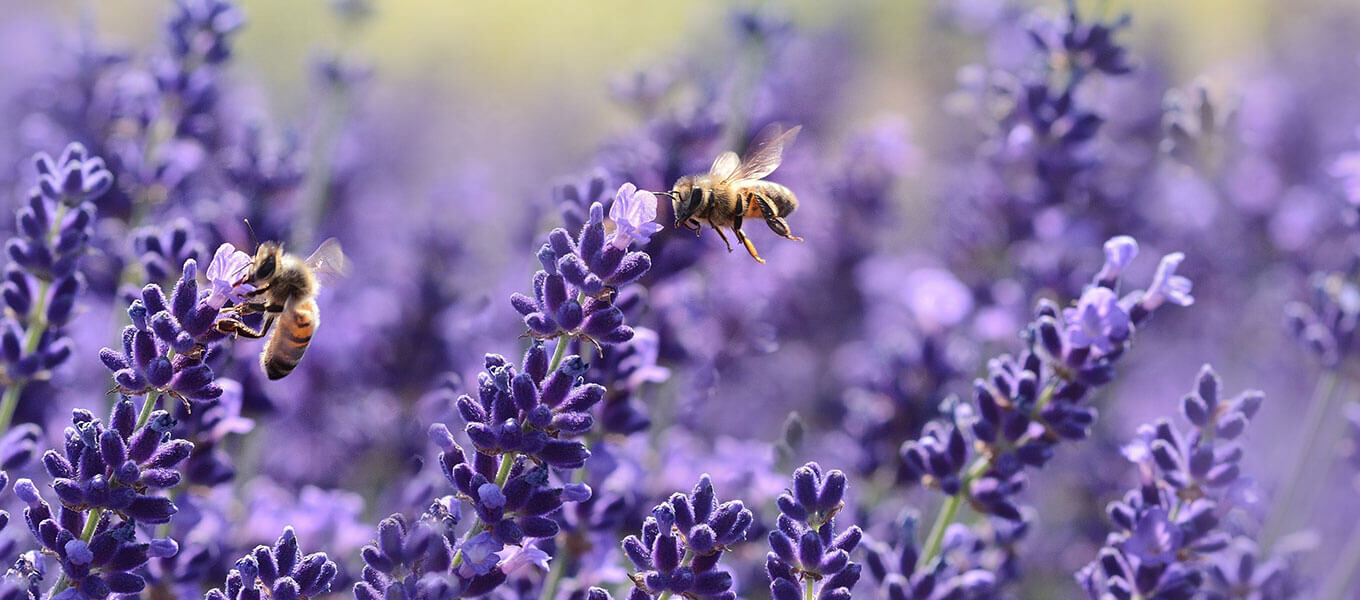
Bee-friendly flowers – how to plant an insect-friendly garden
World Bee Day will be held for the sixt time on 20 May 2024. The aim of this day is to draw attention to bees and other pollinating insects. The habitat of many insects is threatened by environmental pollution, climate change and changes in land use.
Bees, bumblebees, butterflies, hoverflies and other pollinators are not only important for fertilising plants, but also for maintaining biodiversity and producing food. Without them, our supermarket shelves would look empty and our fragile ecosystems would quickly collapse.
When bees and other insects fly from flower to flower, they distribute pollen to different flowers and pollinate them incidentally in search of food. Interestingly, not all pollinators like the same plants and are not able to get pollen and nectar from all plants.
The best-known example is vibration pollination, which is mainly carried out by bumblebees. Solanaceous plants like the tomato only release their pollen when the anther containing the pollen is shaken. Bumblebees are therefore the best pollinators of the tomato. What each and every one of us can do to protect them in the home garden or on the balcony is what we want to look at in more detail in this blog post.

Whats a bee-friendly garden?
An insect-friendly garden provides a natural and abundant environment for pollinators such as bees, bumblebees and butterflies. The key to such a garden is to use native and pollinator-friendly plants that provide food and shelter.
It is also important for a pollinator-friendly garden to avoid chemical pesticides and fertilisers. These can be toxic to many pollinators, regardless of the quantity, and can severely affect them.
Instead, natural methods such as composting, pest control with beneficial insects and hand weeding can help protect pollinators. Creating a pollinator-friendly garden can help support the many important insects and promote their role in our ecosystem.
Overview - Which flowers do bees like best?
In Germany, there are a large number of plant species that are an important source of food for pollinators. The supply of flowers and thus of pollen and nectar depends on various factors such as the season, location and climate in the region.
It is important to be aware of the needs of different insects and choose the right plants for the location accordingly. But how do bees and other pollinators decide which plants they like? In fact, there are several factors that play a role in this decision.
First of all, the scent of the plant is crucial. Bees have a very good sense of smell and are particularly sensitive to the scent of flowers. If a plant gives off a sweet or spicy scent, it signals to bees and other insects that it is a good source of food.
Another factor is the colour of a plant. Bees can see certain colours well, especially blue, yellow and ultraviolet. Plants with these colours are therefore particularly appealing to bees. But colours like white, pink and purple are also popular.
Another point is the shape of the flower, which is an important deciding factor for insects in their search for food. Plants with flat or open flowers, such as daisies or yarrows, are very popular with bees and other pollinators because of their shape, as they are easily accessible and it is easier to get at the nectar.
And of course, the timing of a plant's flowering is a particularly important factor. Insect-friendly plants that flower at different times of the year are important for a consistent food supply throughout the year. By specifically planting bee-friendly plants on the balcony or in the garden, we can ensure that pollinators find enough food throughout the year.
Winter-hardy plants for bees and other pollinators
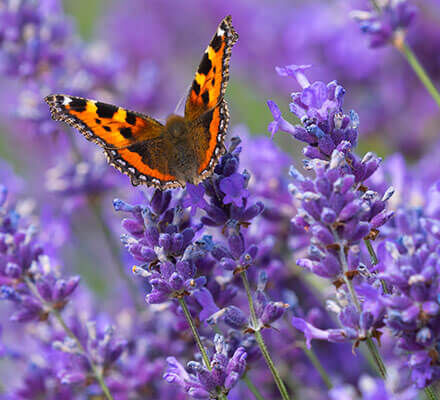
Lavender
Lavender is not only a beautiful spice and fragrance plant, but is also a real magnet for bees and other pollinators. This flowering plant is one of the best sources of nectar and pollen for bees and helps to ensure the survival of these important insects.
It is also important to mention that lavender is not only beneficial for bees, but also for other pollinators such as butterflies and bumblebees. So if you have a lavender plant in your garden, you are actively helping to protect these important insects.
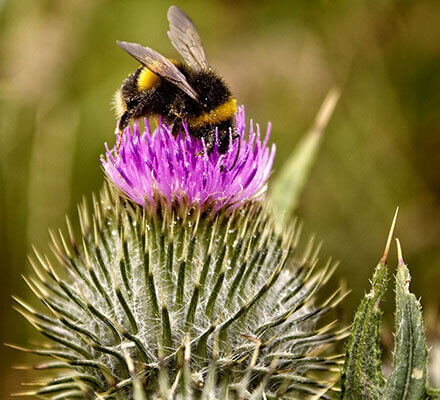
Thistle
Although thistles are often considered a nuisance weed, they are in fact a valuable source of nectar and pollen for bees and other pollinators. Despite their bad reputation, these spiny plants contribute to the survival of many insects.
Many bee species, such as the leafcutter bee and the woolly bee, are attracted to the purple and pink flowers, for example. It is also popular with butterflies, as the donkey thistle demonstrates to us. It is one of the main food sources for the red-banded velvet butterfly.
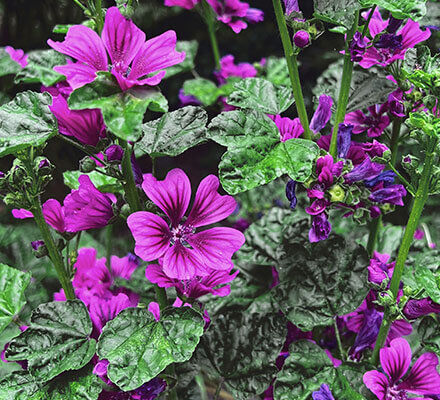
Wild mallow
The wild mallow is an excellent plant for bees and other pollinators. The flowers of the mallow are rich in nectar and pollen and provide an important food source for bees and other beneficial insects.
However, mallows are not only a great source of food, but also provide shelter and habitat for insects and other animals - the dense leaves offer important protection from predators.
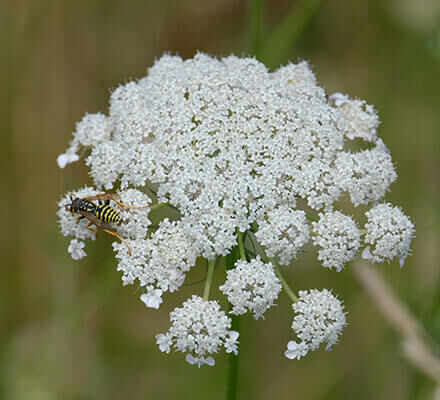
Wild carrot
The wild carrot is a biennial plant. It survives the winter through its underground tuber, where it gathers nutrients for the upcoming flowering. The wild carrot is a fascinating plant, known to many as a wildflower.
But it also plays an important role for bees and other pollinators. The white flowers of the wild carrot are rich in nectar and pollen. A prominent example of insects that use the wild carrot as a food source is the swallowtail.
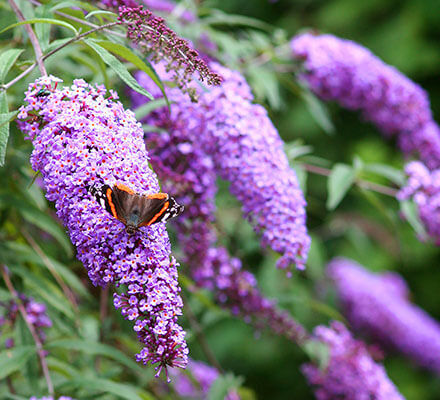
Butterfly bush
The butterfly bush, as the name suggests, is an important plant for butterflies. The striking inflorescences of the butterfly bush come in different colours such as purple, pink or white.
The stamens of the butterfly bush are hidden in the elongated flower tube, which is why it is mainly long-nosed insects such as butterflies, but also bumblebees, that visit the flowers.
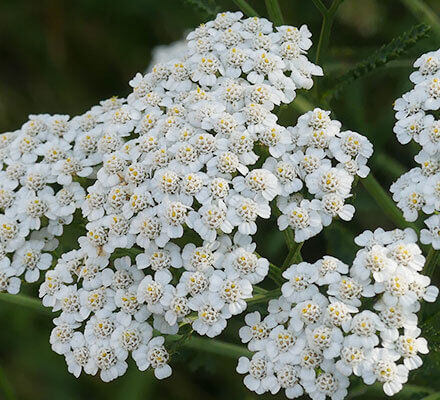
Yarrow
Yarrow is native to almost all of Europe and is found as far as the Arctic Circle. Here in Germany, it is mainly seen along roadsides and as an important component of bee meadows, where its longevity and high nectar and pollen content are impressive.
Yarrow is equally appreciated by all pollinators and has also long served humans as a medicinal plant.
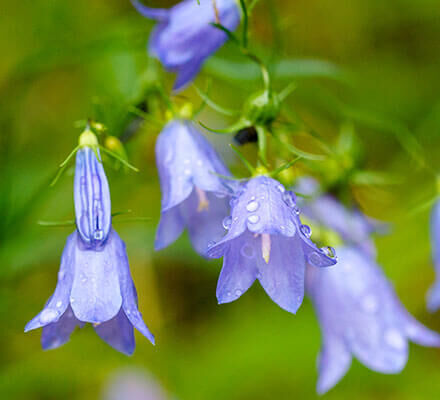
Round-leaved bellflowers
The round-leaved bellflower originates from the Alpine region and is an important pollen supplier for wild bees in particular for their larvae.
Among the various bellflower species, it is considered the most popular with wild bees and serves as a pollen source for 15 common wild bee species in Germany.
Insect-friendly balcony plants
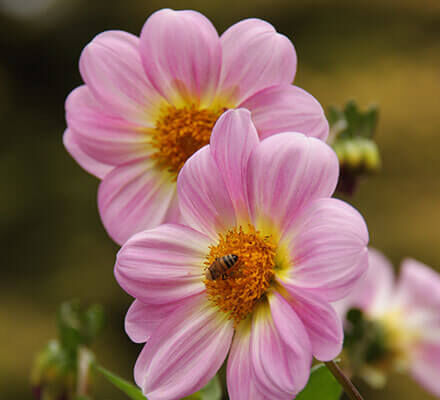
Dahlias
The dahlia originates from Mexico, but also provides a long-lasting flowering splendour in our gardens. But is the dahlia bee-friendly? With flowering times from June to the first sub-zero temperatures, it can be an important food source for various insects.
For the garden and balcony, however, only unfilled varieties should be chosen, as only these contain nectar and pollen easily accessible to insects.
A rule of thumb for other flowers also applies: If you cannot clearly see the stamen, but only the petals, the flowers are unsuitable as a food source for insects.
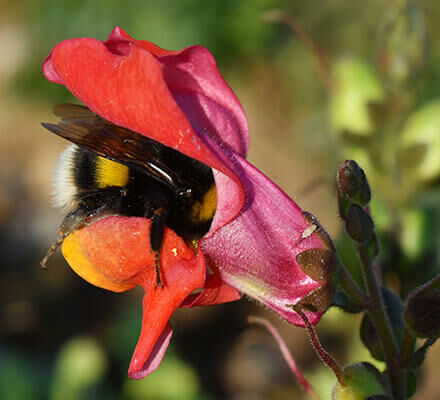
Wild snapdragon
The wild snapdragon is mainly visited by bees and bumblebees. Only these have the necessary weight to fold down the lower petal to reach nectar and pollen.
In addition to the wild annual form, there are also numerous cultivated perennial varieties that are also popular bee and bumblebee plants.
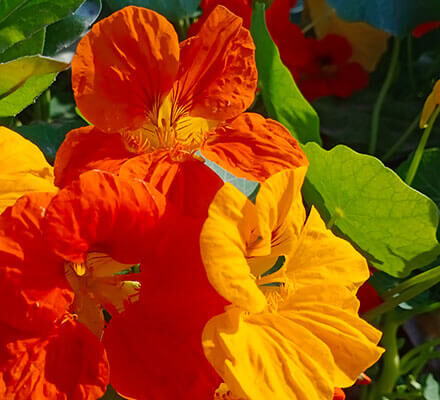
Nasturtium
The nasturtium is considered a climbing plant and originates from South America, where it is not pollinated by insects, but by hummingbirds. In Germany, it is mainly bumblebees and butterflies that perform this task.
In a sufficiently large pot nasturtium feels comfortable even on the balcony.
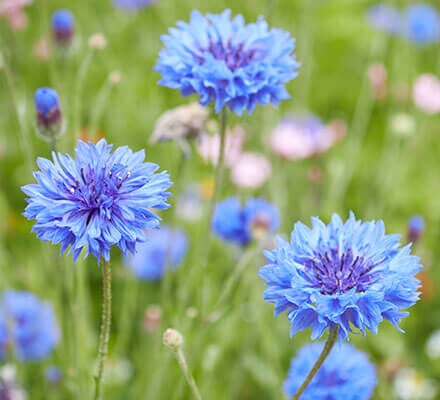
Cornflower
The cornflower is a bee-friendly flower, but it is not considered a native wild plant. Nevertheless, it is quite popular with our pollinators. Bumblebees, bees, hoverflies, wasps and even moths are often seen feeding on the nectar and pollen of the cornflower.
Cornflower also belongs to the category of bee-friendly flowers, which feel comfortable in balcony boxes.
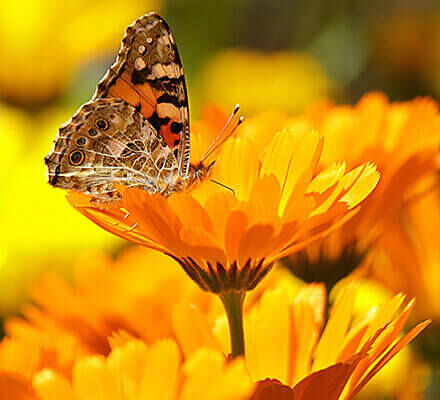
Calendula
The marigold originally comes from the Mediterranean region and is known in our country mainly for its healing properties. But insects have also discovered the marigold for themselves. Honey bees, wild bees, butterflies and bumblebees are particularly fond of them.
Hoverflies and lacewings even form a special bond with marigolds. While the adult flies seek out the marigold for food, their larvae in turn eat the marigold's pests.
Tips for insect friendly garden and balcony
Chemical free fertilizing
Instead of chemical fertilizers, plants and insects are happy to receive organic fertilizers. These are often made from natural materials such as compost, manure or plant waste. They provide the soil with nutrients and promote soil life by stimulating the growth of beneficial microorganisms and earthworms.
Chemical fertilizers can also easily overfertilize plants, which can even have an impact on the quality of nectar and pollen.
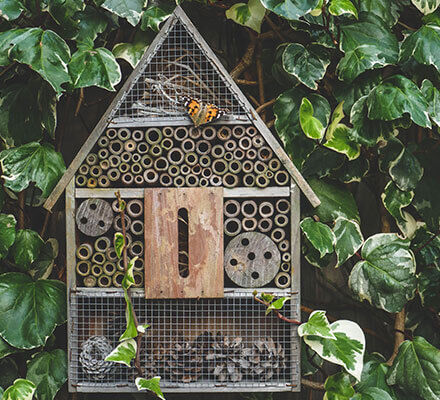
Insect hotels
There are many different types of insect hotels, suitable for both the garden and the balcony. From elaborate constructions to small structures made of wooden tubes, there is a lot available on the market.
But what should you look for when buying? First of all, you should take a close look at the insect hotel to make sure that the well-being of the various insects is guaranteed. A common problem is uncleanly processed materials, such as bamboo canes, which serve as nesting sites for some species of wild bees. Sharp edges can result from unclean milling, injuring the delicate insects.
The location of the insect hotel is also important. Insect hotels that face south are best, as insect brood in particular needs warmth for healthy development. In addition, care should be taken that the approach of the animals is facilitated by a free flight path.
Frequently asked questions about bee friendly plants
Which flowers are particularly insect-friendly?
Flowers such as sunflowers, lavender and marigolds are particularly insect-friendly and, because of their popularity, are widely planted in our gardens. Being rich in nectar and pollen, they are also an important food source for bees, butterflies and other pollinators.
Which hardy plants are bee friendly?
Winter-hardy plants that are particularly bee-friendly include crocuses, winter jasmine, snowdrops and winter heather. In the still cold season, when little else is in bloom, these plants provide an important food source for various pollinators.
What flowers for bees on the balcony?
Some bee-friendly flowering plants that also like to grow on the balcony are, for example, lavender, thyme, bee lover and the nasturtium. These plants provide abundant nectar and pollen for bees and attract them with their bright colors and pleasant scents.
Is hibiscus good for bees?
In general, hibiscus is not particularly bee-friendly, as its flowers are often double or double and offer little nectar to pollinators. However, there are some hibiscus species with single flowers that can be an interesting food source for pollinators. A well-known example of this is the marshmallow.
What kind of flowers do bees not like at all?
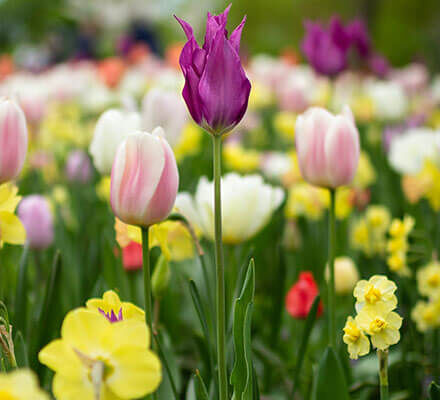
Tulips
Tulip is a popular spring flower and can be seen in many gardens and parks at this time. But for bees, unfortunately, it is less suitable. This is due to the fact that tulips hardly produce nectar, which is an important food source for bees and other pollinators.
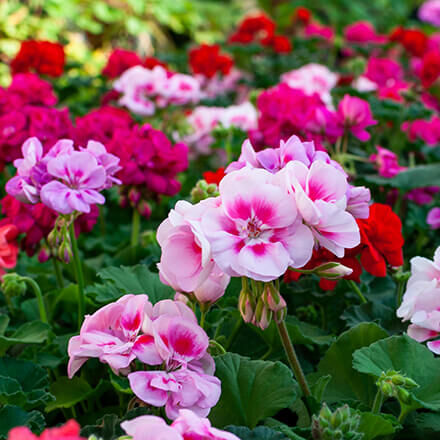
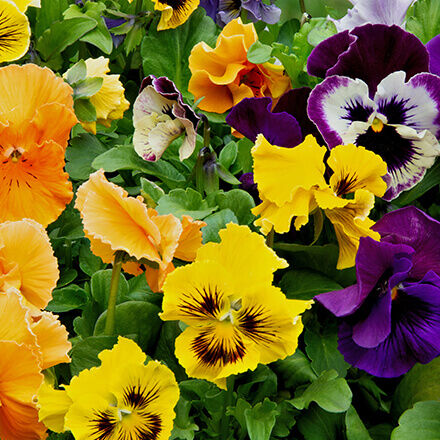
Pansies
Pansy has been a popular flower for the balcony for many years. However, after years of breeding to produce a more and more colorful flower, unfortunately, necarias have shrunk to the point that they provide little food for bees.
Which perennials are hardy and bee-friendly?
The sedum and coneflower are well-known examples of hardy and bee-friendly perennials. They are both very robust plants that thrive even in the colder seasons and provide a valuable source of food for insects.














